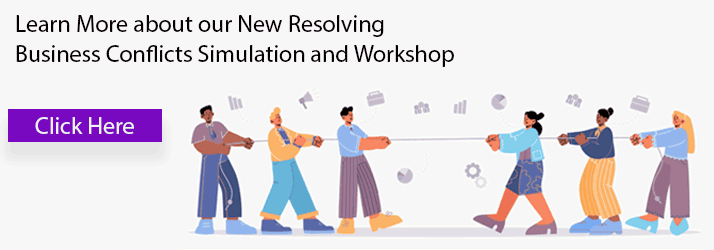Over the past few months, the Advantexe business simulation design team has been conducting intensive research on the topic of psychological safety as we design, develop, and get ready to launch our new Psychological Safety simulation. I am pleased to share some of the most interesting findings from the research which included a focus group of experienced leaders from several different industries.
intensive research on the topic of psychological safety as we design, develop, and get ready to launch our new Psychological Safety simulation. I am pleased to share some of the most interesting findings from the research which included a focus group of experienced leaders from several different industries.
Here are 5 new ideas for creating an environment of psychological safety in your business or team:
Coach to effectiveness not getting people to just work harder
Inexperienced managers typically default to their leadership approach to easier metrics like getting people to work harder. They tend to take a rigorous, “hard ass” approach in the hope of getting more productivity. The problem with that approach is that it creates an environment that is not psychologically safe and promotes the wrong behaviors.
The better approach is to coach people to focus on effectiveness. Effectiveness means achieving the goals and objectives that you’ve set as a business. For example, if achieving a high customer satisfaction score is a key metric, and your team is working smart and effectively to achieve the goal, then pushing people to just “work harder” doesn’t achieve anything other than destroying the culture.
Go out of your way to earn and give trust
Trust. It’s a fragile thing. It takes years to cultivate and seconds to destroy. The leaders we spoke with shared that one of the most important things a leader can do to create an environment of psychological safety is to put in a lot of extra work to earn trust and extend even more effort to give it.
Cultivate, embrace, and reward curiosity
Curious people are psychologically safe people. They are able to think about the future, imagine the what-ifs, and try things others are too scared to try. Our leaders shared that they have had the most successful teams and the safest teams when they have supported and rewarded their direct reports for being curious failing fast, and learning from mistakes.
Think differently about creativity
Creativity and innovation rarely happen at your desk. For many people who need to be creative in their jobs, their most creative places are often off the beaten path. When we asked the leaders in the focus groups where their people were most effective when being creative the answers were amazing:
- In the shower
- Going for a long run
- Riding my bike
- Taking my kids to school
- Having a couple of beers
While some of these are unconventional, they are the responses. The takeaway is that you have a choice to make when it comes to creativity. Either let your people find their own creative space and pace or you suffer from turnover, injuries, and poor productivity.
Encourage healthy business conflicts and have the tools needed to resolve them
Another topic near and dear to our hearts is resolving business conflicts. A business conflict is different than a personal conflict because they happen in a business environment and involve people coming from different perspectives, functions, and regions. As leaders, you must do everything possible to provide your people with the tools and resources needed to encourage healthy business conflicts that stimulate thoughtfulness and collaboration. Based on the incredible insights from or focus group, there are several great frameworks for identifying and resolving business conflicts. For example, the simplest conflict archetype is where people within a company are in conflict over shared resources. Even though it’s called shared, most people don’t want to share. Effective leaders are able to put things into context and create goals and objectives that are aligned with the strategy.




